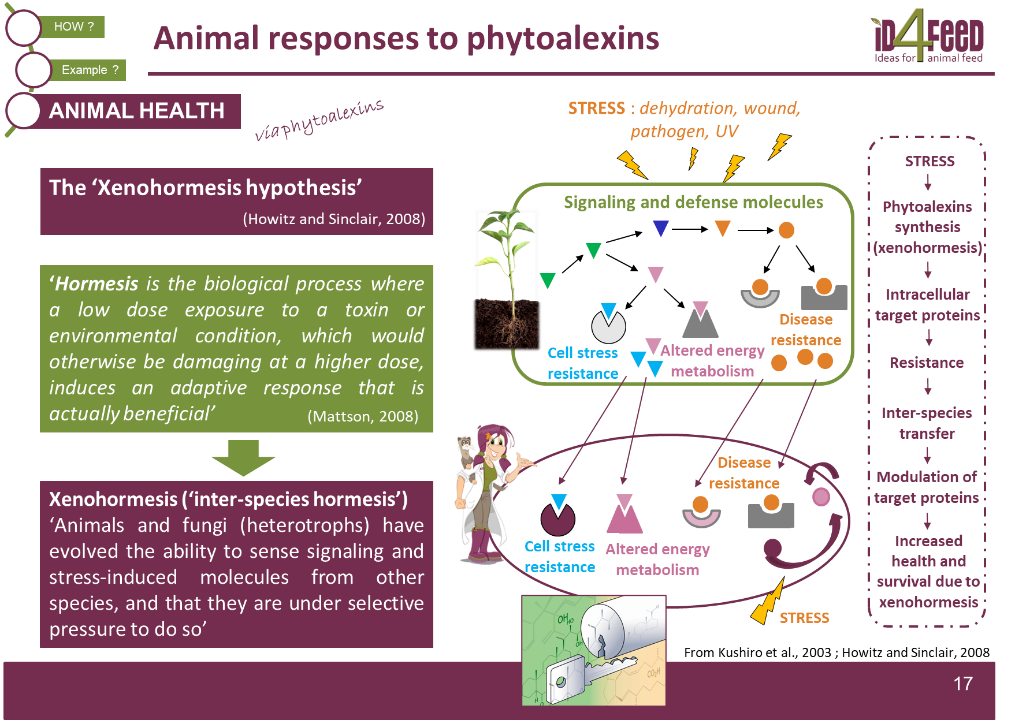Camille Rozier – ID4FEED R&D Manager presented during the first edition of the Biosis Days one of her research projects: Better understand the immunity of plants and animals to select plant secondary metabolites.
As plants are not able to flee in case of an attack, they remain totally subject to the numerous environmental changes of their area of growth such as extreme temperatures or lights, salinity, nutrient deficiency (abiotic stress) or predators, pathogens (biotic stress). A stress or a combination of stress can remain a beneficial stress (“eustress”) because it increases the plant resistance, or become a harmful stress (“distress”) if it disrupts the plant homeostasis and generates damages in the plant.
Plant defense responses are built around a passive strategy with pre-existing structural or chemical defenses (constitutive and localizeddefensins and phytoanticipins). Unlike animals, plants do not possess mobile defender cells or a somatic adaptive immune system. Then, in addition to pre-existing defenses, they have to induce several biosynthesis cascades in response to extracellular PAMPs (Pathogen Associated Molecular Patterns) or intracellular effectors recognition. This triggers the synthesis of both rapid/local and systemic defenses such as oxidative burst, de novo synthesis of secondary metabolites of defenses (SM). When SM are produced as an answer to a stress, we call them phytoalexins.
A wide number of biological benefits have been recorded in using plant SM in animals. Two hypotheses have been highlighted to understand the reasons why animals are able to recognize plant specific molecules and use them through specific receptors. The first one is the ‘common origin hypothesis’, based on the existence of a common ancestor of plant and animals in the biosynthetic pathways (Kushiro et al., 2003). The second one is the ‘xenohormesis hypothesis’ (Howitz and Sinclair, 2008) based on the co-evolution of plant and animals that developed the ability to sense stress-induced molecules from other species (Figure 1).

Above all, if you have any questions on this subject, please send them to : camille.rozier@id4feed.com
